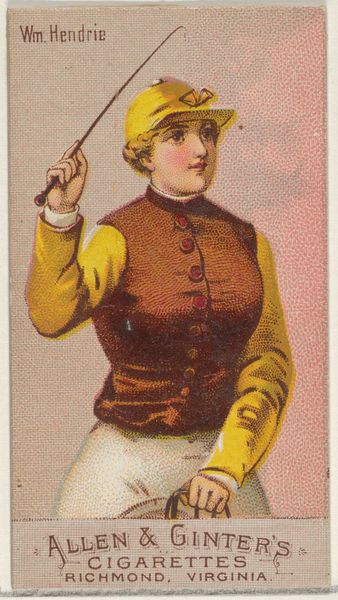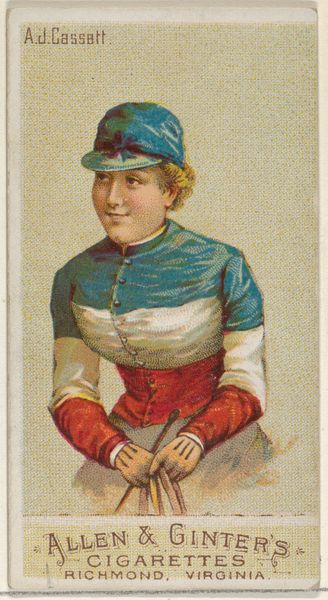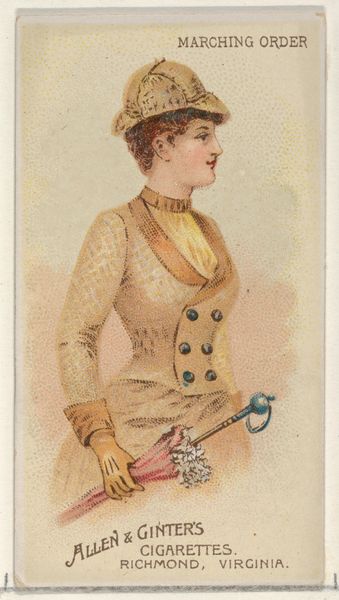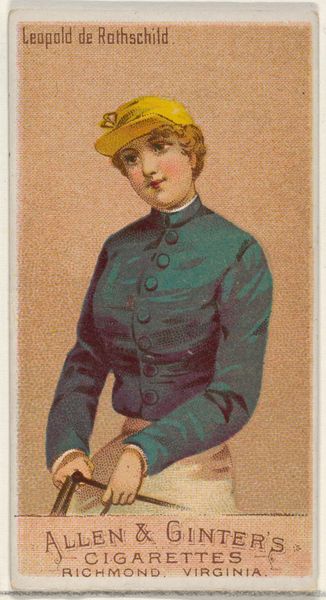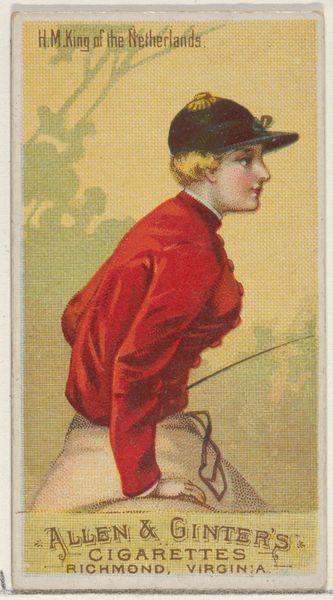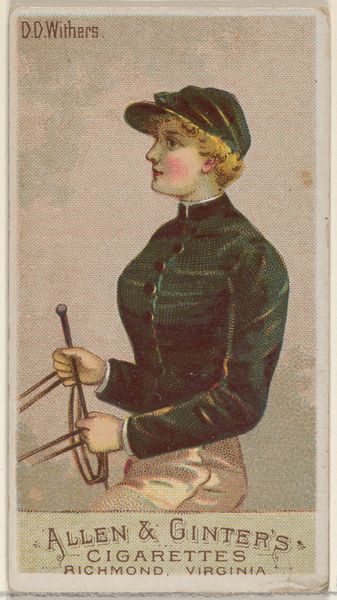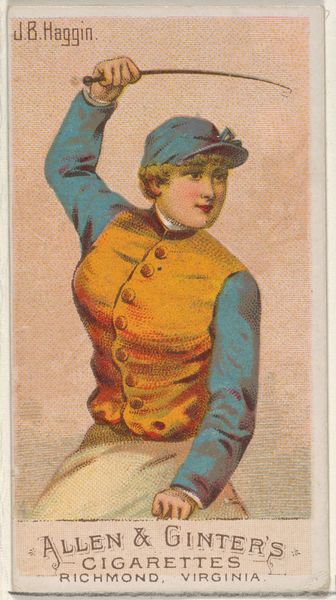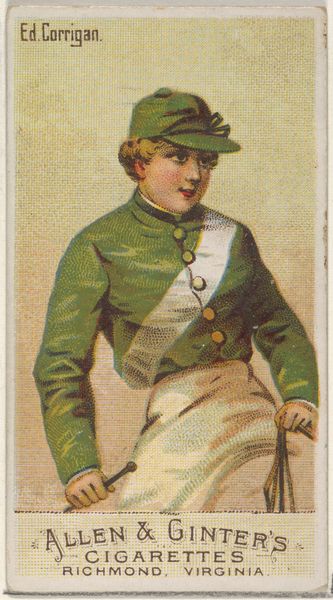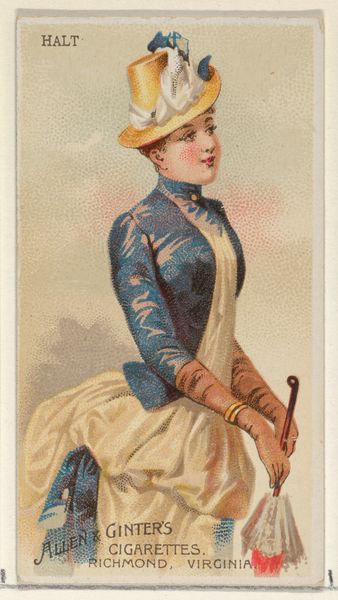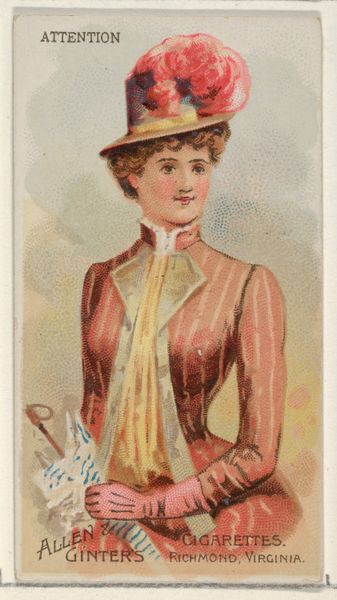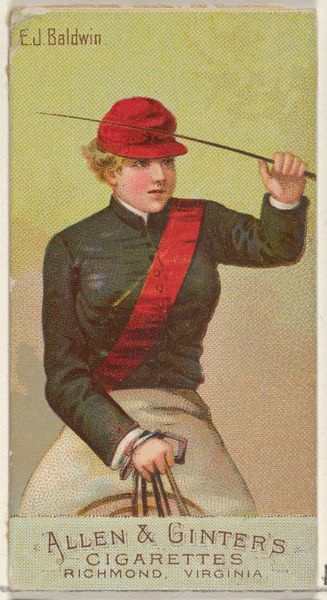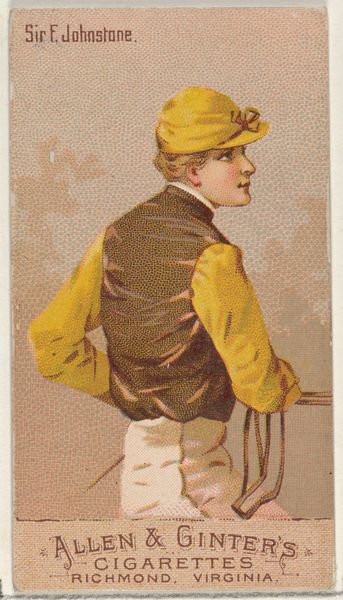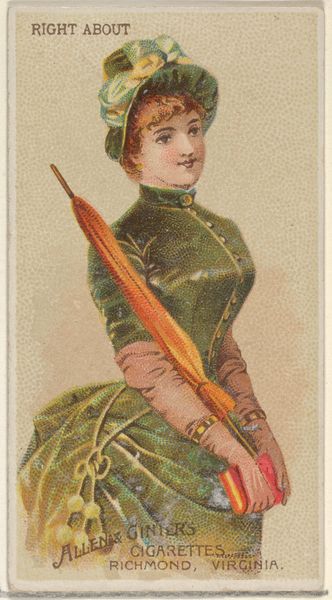
Duke of Portland, from the Racing Colors of the World series (N22a) for Allen & Ginter Cigarettes 1888
0:00
0:00
#
portrait
# print
#
coloured pencil
#
portrait drawing
Dimensions: Sheet: 2 3/4 x 1 1/2 in. (7 x 3.8 cm)
Copyright: Public Domain
Curator: This is a card from Allen & Ginter's "Racing Colors of the World" series, dating back to 1888. It presents a portrait of the Duke of Portland rendered as a print with colored pencil. Editor: It's immediately striking how... corporate it feels. A portrait meant to sell cigarettes. It makes me think about the commodification of status and leisure, even back then. Curator: Exactly. What do you read in this symbol? Editor: There is the riding crop as an equestrian symbol representing power, and there are the racing colors themselves. Racing colors are historically assigned and tied to family identity and privilege. Their presence here is so direct and yet somehow drained of their inherent nobility, put to use in tobacco sales. It makes me wonder if tobacco companies were also attempting to normalize this elite and masculine symbolism among working class consumers. Curator: Indeed. But think of the image itself, though. Even removed from its function as advertisement, there is the Duke himself, captured in profile—almost a classical bust. The idealized representation lends a timeless quality. There is almost a direct dialogue between Japonisme aesthetics and notions of power that transcend the constraints of history. It shows cultural aspirations too. Editor: That's a beautiful thought, the cultural aspirations—but the elitism here seems to be screaming louder to me. It’s meant to associate their cigarettes with the finer things in life. In terms of how imagery works, there’s something unsettling in extracting it to suit commercial intent, though. The social implication here must have been huge. Curator: True, the appropriation and deployment is blunt here. Nevertheless, perhaps some buyers saw this card as more than marketing. A window, however warped, to another world of power. Editor: Yes, maybe that image did spark an alternative desire. I suppose what is most revealing for me is this connection of smoking with ideals and status in this era and location, since it directly promoted addictive behaviors which had material impact. Curator: A curious symbol—and like many images, full of internal paradoxes. Thank you for opening that. Editor: Thank you; as always, this reminds me that an artwork can exist as a point for future reflection, beyond the original context for its creation.
Comments
No comments
Be the first to comment and join the conversation on the ultimate creative platform.
